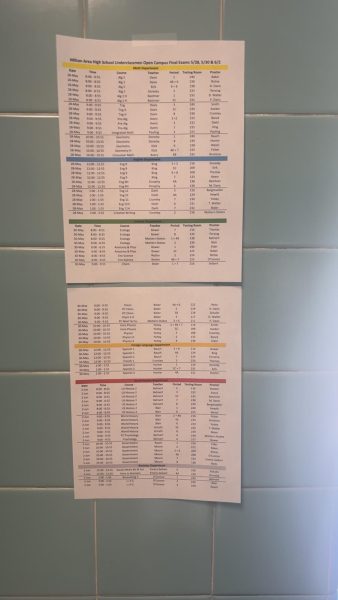HS discipline trends hold steady
In the first marking period of the 2020-21 school year at Milton Area High School there were 159 discipline referrals.
Co-Principal Mr. Andrew Rantz said that the discipline referrals over the past two years have decreased compared to the years before COVID-19. Last year in the first marking period 143 discipline referrals were made.
According to Mr. Rantz, most of the referrals were for students cutting classes. During the 2019-20 school year, the referrals of cutting class were mainly by students being late to or skipping Pride, he added. At the time, students had to schedule themselves with teachers for Pride for the week.
“The number of kids that did not look at their schedule and go to the wrong place and get themselves written up for cutting assigned area was like quadruple…what we normally dealt with,” said Mr. Rantz.
Since COVID-19 began, administrators stopped letting students schedule their Pride and went back to students being based in their Day One Pride location every day. Mr. Rantz added that they have continued the procedure because of the decrease in discipline referrals.
The data states that the number of behavior issues have stayed the same and haven’t really changed since COVID-19, according to Mr. Rantz.
The student handbook describes examples of various disciplinary infractions and consequences.
Level One offenses include cutting class, using bad language, dress codes, using cell phones and tardiness. The consequences include detention and phone communication with a parent.
Examples of Level Two offenses include disruption of a school bus, refusal to obey school rules and insubordination or defiance. Level Two offenses could result in loss of privileges, in-school suspension, a written cease and desist order multiple detentions.
Level Three offenses include disrespect toward adults, gambling, sexual harassment, threats towards students or staff and leaving the school grounds without permission. Level Three consequences can include exclusion from extra-curricular activities, police referral, out-of-school suspension and a referral for supportive resources.
Theft, fighting, vandalism and the use or possession of tobacco are examples of Level Four offenses.
Level Five offenses include the possession of weapons on school property or any school-sponsored activity. The possession and distribution of drugs and alcohol is another Level Five offense.
Level Four and Five consequences can include, recommendations for other education placements and an administrative review for the school board whether expulsion is the way to go.
Mr. Rantz said that principals in the regional area have a group e-mail chain where they can ask each other questions and see how everyone is handling the situations.
The last time that the principals got together to talk before COVID-19 was in 2018-2019 school year when vaping was a big issue. They have regional meetings where the principals get together every other month, according to Mr. Rantz.
Mr. Rantz said that the resource officers in the school are employed by the Milton Borough Police Department. The school has a memorandum of understanding (MOU) with the Borough allowing the officers to work with the school.
“We’re two separate entities. How we handle a student committing an infraction in this building versus how they handle it and what they are going to do on their end is two completely different things,” Mr. Rantz added.
The school and resource officers will work together and share information if problems are happening outside and are being brought into the school, said Mr.Rantz.
“When it comes to an investigation, an issue in consequences and things like that, we are completely separate,” added Mr. Rantz.

I’m Madelyn Nicholas and I’m a senior. I’m an Editor. Some of my activities include Tennis and Softball. In addition to participating in sports,...



